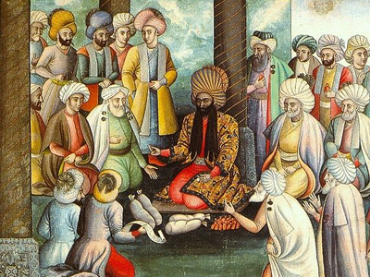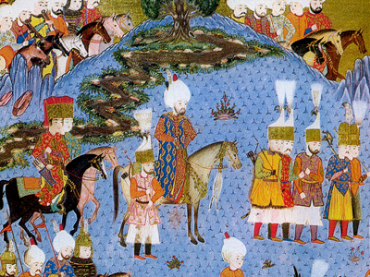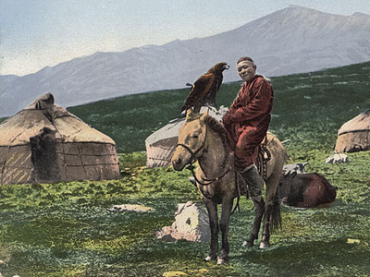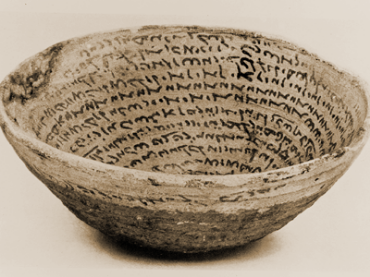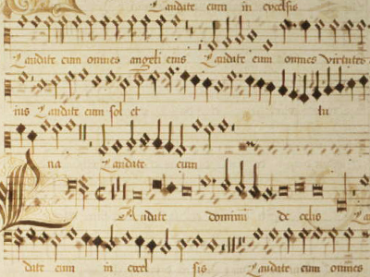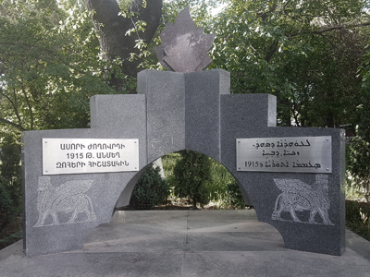History
Remarks on Ancient North Arabian Inscriptions from the Region of Taymā’
Series: Analecta Gorgiana 1002
ISBN: 978-1-61719-827-4
This article examines Ancient North Arabian inscriptions and their various epigraphic types found in the region of Taymā'.
$34.00
A Recently-Discovered Nabataean Sanctuary, Possibly Devoted to the Sun-God
By Laïla Nehme
Series: Analecta Gorgiana 1005
ISBN: 978-1-61719-830-4
This article presents, in provisional form, a recently discovered and excavated Nabataean sanctuary devoted to the cult of the sun-god in Madâ’in Sâlih, ancient Hegra.
$33.00
Snakes in Petra
Series: Analecta Gorgiana 1003
ISBN: 978-1-61719-833-5
This article provides some new information about the role of snakes in relation to Nabataean religion, presenting a small group of unknown snake monuments from Petra.
$42.00
Petits Traités Apologétiques de Yahya ben Adi (Maqālāt li-Yahya ibn Adi)
Texte Arabe Édité pour la Première Fois d’Après les Manuscrits de Paris, de Rome et de Munich, et Traduit en Français
Edited and Translated by Augustin Périer
Series: Christian Arabic Studies Library 1
ISBN: 978-1-61143-058-5
This volume is a good quality reprint of the 1920 edition of Augustin Périer's classic text. It will be of interest to scholars working in the fields of philosophy, theology and Christian Arabic studies.
$157.00
Journal of Anthropology
Printed Edition
Edited by Marco Menicocci
ISBN: 978-1-4632-0212-5
AOJA is an multilingual European project that collect studies in the fields of physical and cultural anthropology, and of the disciplines related to. It offers original researches by scholars of merit and young researchers, with particular attention to proposals by Asian and developing countries authors.
$78.00
Color-Terms in Social and Cultural Context in Ancient Rome
ISBN: 978-1-61143-914-4
Romans attached nuanced implications to color-terms which went beyond their literal meaning, using these terms as a form of cultural assessment, defining their social values and order. By analyzing the use and color words in specific contexts, we can gain greater insight into the Roman mind.
$134.00
The Account of the Syriac Orthodox Patriarch Yūḥanun Bar Šay Allāh (1483–1492)
The Syriac Manuscript of Cambridge: DD.3.8(1)
Series: Gorgias Eastern Christian Studies 34
ISBN: 978-1-4632-0213-2
This volume provides an analysis of a late fifteenth century document, a hitherto unpublished narration of the life and accomplishments of Yūḥanun Bar Šay Allāh, a fifteenth-century Syriac Orthodox Patriarch. It includes considerable unique historical information, shedding light on the history of the Syriac community in relation to other communities. It also supplies descriptions of events that brought important changes to the Syriac Church in Mesopotamia, Syria and Egypt.
$106.00
Scribal Wit
Aramaic Mnemonics in the Leningrad Codex
By David Marcus
Series: Texts and Studies (Third Series) 10
ISBN: 978-1-61143-904-5
This book presents a detailed analysis of the Aramaic mnemonics, those short witty sentences written in Aramaic as memory aids in the margins of one of the oldest extant biblical Hebrew manuscripts, the Leningrad Codex (1008 CE). The material is presented in clear, user-friendly charts. Each mnemonic is set alongside the Hebrew verses it represents. This book demonstrates the ingenuity of the Masoretes in their grand endeavor to preserve the text of the Hebrew Bible precisely in the form that it had reached them.
$132.00
Multilingual and Multigraphic Documents and Manuscripts of East and West
Edited by Giuseppe Mandalà & Inmaculada Pérez Martín
ISBN: 978-1-4632-0283-5
This volume deals with the evidence from manuscripts and handwritten documents with multilingual and multigraphic structures in Arabic, Hebrew, Latin and Greek, conceived and designed to display texts in different languages or scripts, as well as addressing the historical context of these testimonia (their production, use and circulation) and focusing on problems inherent to multicultural societies.
$228.69
Iran as Imagined Nation
ISBN: 978-1-4632-0227-9
A critical study of how Iranian nationalism, itself largely influenced by Orientalist scholarship first undertaken by the European Orientalists of the nineteenth and twentieth centuries, has shaped modern conceptions of Iran and Iranian identity, as well as narratives of Iranian history, leading to the adoption of a broad nationalist construction of identity to suit Iranian political and ideological circumstances. This book argues that such a broad-brushed approach and the term “Iranian” could not have applied to the large multiethnic, multilingual, and multicultural populations in the vast territory of Iran over so many distinct historical periods.
$39.00
In the Arms of Biblical Women
Edited by John T. Greene & Mishael M. Caspi
Series: Biblical Intersections 13
ISBN: 978-1-4632-0231-6
The less-discussed character in the Bible is the woman: two talking animals therein have sometimes received more page space. This volume shines the light of close scrutiny in the less-trodden direction and focuses on biblical and allied women, or on the feminine side of Creation. Biblical women are compared to mythical characters from the wider Middle East or from contemporary literature, and feminist/womanist perspectives are discussed alongside traditional and theological perspectives.
$168.00
The Dreams and Visions of Aelius Aristides
A Case-Study in the History of Religions
ISBN: 978-1-4632-0232-3
An analysis of the religious experiences of the Greco-Roman sophist, Aelius Aristides. As a member of the cult of Asclepius, Aristides recorded his nocturnal dreams, waking visions and spiritual healings in a diary entitled the Sacred Tales. A study of this diary sheds light on the spiritual environment of the Roman world in the first and second century CE.
$125.00
Travels to Jerusalem and Mount Athos
Series: Gorgias Ottoman Travelers 3
ISBN: 978-1-4632-0418-1
An account by Archpriest Petre Konchoshvili of his travels to Jerusalem and Mount Athos in 1899, dealing with the relations between the Georgians, Greeks and Russians in the Holy Land.
$147.00
The Small Temple
A Roman Imperial Cult Building in Petra, Jordan
ISBN: 978-1-4632-0234-7
Excavation of the Small Temple of Petra, Jordan has revealed a Roman building likely dedicated to the imperial cult. Constructed in the wake of Roman annexation of Nabataea in 106 CE, the temple would have helped to solidify Roman control. Reid systematically examines the evidence used to support the identification of the Small Temple as an imperial cult building through the discussion of its prominent use of marble, a material with Roman imperial associations and almost entirely monopolized by the bureaucracy of the Roman Empire. The analysis of architectural evidence, as well as the placement of the Small Temple within the city, also support this identification.
$146.00
The History, Poetry, and Genealogy of the Yemen
The Akhbar of Abid b. Sharya Al-Jurhumi
Series: Gorgias Islamic Studies 3
ISBN: 978-1-59333-394-2
The History, Poetry, and Genealogy of the Yemen is the earliest known history of pre-Islamic Yemen. Attributed to the South Arabian historian ‘Abid b. Sharya al-Jurhumi, it recounts in prose and poetry six saga cycles of ancient personages and events of the Yemen. Here, two sagas, the dispersion of Sam’s descendants from Babel to the Yemen, and the destruction of the tribes of ‘Ad and Thamud, are translated with complete annotation. The tales of Luqman b. ‘Ad and his seven vultures, Sulayman and Bilqis, the Himyarite kings, and Tasm and Jadis are given in full synopses.
$184.00
The Sleeper's Dream
Asclepius Ritual and Early Christian Discourse
ISBN: 978-1-4632-0256-9
This analysis probes into the nature and use of bodily healing and dreams in antiquity, examining literary and archaeological evidence in order to gain a sense of how the Greco-Roman world understood each through the Asclepius cult, and to understand references to bodily healings and dreams by early Christian cults and groups.
$145.00
A Hellenistic Paradeisos in the Nabataean Capital
Results from the Petra "Lower Market" Survey and Excavation, 1998
ISBN: 978-1-59333-120-7
Excavations in the Lower Market in Petra (Jordan), capital of the ancient kingdom of Nabsataea, uncovered the remnants of a monumental pool-complex at the heart of the ancient city. It played an important role in the socio-political life of Petra during the Nabataean and Roman periods. The mere presence of a paradeidos in Petra symbolized the Nabataean king's power and helped to legitimize his place among contemporary rulers. The paradeisos is an example of a gratuitous display of conspicuous consumption, a symbol of the flourishing status of Petra during its Classical era.
$157.00
Barhebraeus
A Bio-Bibliography
Series: Gorgias Eastern Christian Studies 9
ISBN: 978-1-59333-148-1
An extensive account of the life and works of Barhebraeus based on the latest research. It includes an appendix containing a comprehensive list of bibliographical references and manuscripts relating to Barhebraeus.
$231.00
Eros and Ritual in Ancient Literature
Singing of Atalanta, Daphnis, and Orpheus
ISBN: 978-1-931956-72-7
This book examines popular erotic myths with regard to their origins and literary treatment throughout antiquity. The relation of ritual to certain mythic patterns that reflect initiation rites is also considered. These myths reinforce the association between cult and mythology in literature. Initiation patterns were employed as literary metaphors for falling in love or even for holding a philosophical argument on human progress. The myths are chosen in order to form a narrative sequence, but also as an example of how mythic patterns can be variously manipulated in literature.
$233.00
Three Mirrors for Two Biblical Ladies
The Queen of Sheba and Susanna in the Eyes of Jews, Christians, and Muslims
Series: Biblical Intersections 14
ISBN: 978-1-59333-363-8
The biblical episode relating the encounter of the Queen of Sheba with Solomon and the apocryphal tale of Susanna, a Jewish woman slanderously accused of adultery by two judges and saved by Daniel, have become part of the collective imagination in West and East. These two Old Testament women have been adapted in art throughout time and space to meet the changing cultural horizons of the community. Like mirrors, various periods and modes of late-Ancient and medieval Judaism, Christianity and Islam have each, in their own way, reflected the characteristics of the great Queen and the chaste Susanna.
$121.00
Cicero 'Haruspex'
Political Prognostication and the Viscera of a Deceased Body Politic
ISBN: 978-1-59333-094-1
This monograph explores Marcus Tullius Cicero's awareness and interpretation of contemporary political events as reflected in his private correspondence during the last years of both the Roman republic and his own life. Cicero's correspondence gives a detailed view of current political events in Rome and constitutes, together with Caesar's writings, our major contemporary evidence for the circumstances of the civil war of 49 BC. The theoretical input of Cicero's predecessors, their perceptions of constitutional development (in particular of Roman politics) as well as Cicero's perception of their political theories are scrutinized to determine the extent of Cicero's awareness of a larger pattern of political events.
$149.00
Reforming Ottoman Governance
Success, Failure and the Path to Decline
By Fuat Andic & Suphan Andic
ISBN: 978-1-4632-0236-1
The book is the history of reform attempts in the Ottoman Empire and the internal and external difficulties in implementing them. Imperialist aggression towards the Empire and bloody janissary revolts hampered the reforms, and although some successes in governance were achieved, there were many failures, and these contributed to the demise of the Empire at the end of the First World War.
$169.00
Sleep and Sleeplessness in Byzantium
ISBN: 978-1-4632-0237-8
In recent decades certain historians have intimated that Byzantine society - and monastics in particular - suffered from a lack of sleep (whether described in negative terms as sleep deprivation or sleep abstinence). Sleep-abstinence surely permeated Byzantine society: it is encountered in every age, sex and class, together with its institutions, beliefs, practices, rituals, morals and mythologies. However, sleep is a biological phenomenon as well. One cannot possibly appreciate the Byzantines' stance towards it, nor assess the veracity, aims and effectiveness of their ideas and attitudes in relation to sleep-abstinence, unless one is ready to tackle the biological aspect. Moreover, without the biological aspect, the claim that the Byzantines were sleep-deprived is impossible to substantiate. This book approaches this subject by using a bio-cultural method, which combines sleep medicine with theology, history, and critical research, in order to analyse the practice of sleep-abstinence and the attitudes towards sleep in Byzantium. Focusing on Greek documentary sources, this book investigates whether Byzantines did indeed practice sleep abstinence or sleep deprivation, and their rationales for curtailing their sleep. Chapters cover the mechanics of sleep in the modern world and in the ancient world, the place of monastic vigil, and the vigil of the laity.
$169.00
Studies in the Early Text of the Gospels and Acts
The Papers of the First Birmingham Colloquium on the Textual Criticism of the New Testament
Edited by David G.K. Taylor
Series: Texts and Studies (Third Series) 1
ISBN: 978-1-4632-0242-2
Eleven papers from the First Birmingham Colloquium on the Textual Criticism of the New Testament, examining aspects of the Textus Receptus, the ‘Pre-Johannine Text’ of the Gospel, the ratings system in the United Bible Societies’ Greek New Testament and the application of probability theory to textual transmission, as well as surveys of non-continuous papyrus witnesses to the New Testament and the Dura-Europos Gospel Harmony, alongside studies of variation in the form of the Beatitudes and the location of Emmaus.
$157.00
A Short Introduction to the Tiberian Masoretic Bible and its Reading Tradition
Series: Gorgias Handbooks 28
ISBN: 978-1-4632-0246-0
This book is intended to provide a quick introductory overview of the Tiberian Masoretic tradition of the Hebrew Bible and its background. It was this tradition that produced the great Masoretic codices of the Middle Ages, which form the basis of modern printed editions of the Hebrew Bible. Particular prominence is given to the multi-layered nature of the Masoretic tradition. The volume contains a section describing the Tiberian reading tradition, which is essential for a correct understanding of the vocalization system.
$47.00
Filter by
Filter by price
Filter by manufacturer

